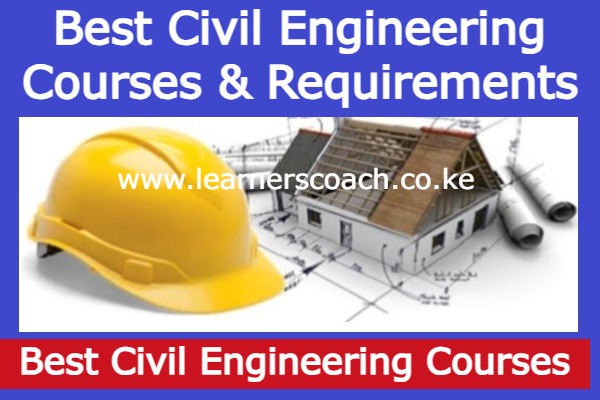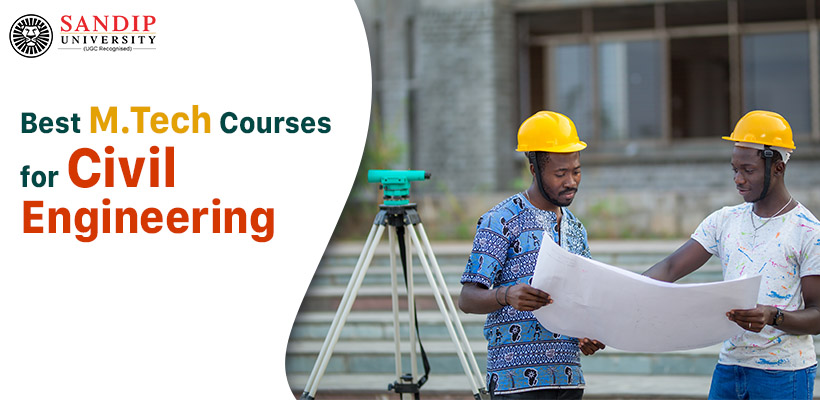My Adventure into Civil Engineering: What I Learned (and Loved!) About the Course
I remember standing on a busy street corner, a towering skyscraper piercing the clouds on one side, a majestic bridge gracefully arching over the river on the other. Below me, the rumble of an underground train, and all around, the intricate dance of traffic lights and pedestrian crossings. I was just a kid then, but even back then, I felt a spark of wonder. How did all this come to be? Who made sure it wouldn’t crumble? That question, that deep curiosity, eventually led me down a path I’ll never regret: pursuing a Civil Engineering Course.
If you’re reading this, chances are you’ve felt that same spark, or maybe you’re just starting to explore what a Civil Engineering Degree entails. Let me tell you, it’s an incredible journey, far more diverse and impactful than I ever imagined. Forget dry textbooks and endless calculations (well, not entirely, but there’s so much more!). It’s about shaping the world around us, literally building the future.
The Starting Line: More Than Just Math and Physics
When I first stepped into my Civil Engineering Course, I was a mix of excitement and nerves. Would I be good enough? Was it all just super-hard math and physics? (Spoiler: Yes, there’s a good chunk of both, but they’re the tools, not the whole picture).
My first year felt a bit like learning a new language. We started with the fundamentals – calculus, advanced physics, and material science. These are the bedrock. Think of it like learning your ABCs before you can write a novel. At times, it felt overwhelming, staring at equations that seemed to stretch into infinity. But my professors, bless their patient souls, always brought it back to the real world. "This force calculation," one would say, "is exactly what ensures that bridge doesn’t collapse under a heavy truck." Suddenly, those abstract numbers started to make sense. They had purpose.
This foundational stage of the Civil Engineering Course taught me not just what to calculate, but why it matters. It was about developing a problem-solving mindset, learning to break down complex issues into manageable parts.
Unpacking the Core: The Many Faces of Civil Engineering
One of the most surprising things about my Civil Engineering Course was discovering just how broad the field is. Before starting, I thought "civil engineer" meant "someone who builds buildings." Boy, was I wrong! It’s like saying a doctor only treats coughs.
Here’s a peek into the incredible variety of subjects we delved into, each opening up a new world of possibilities:
-
Structural Engineering: The Bones of Our World
This was probably the first thing that clicked for me. It’s all about the design and analysis of structures – buildings, bridges, towers, dams. We learned how to ensure they can withstand gravity, wind, earthquakes, and the daily stresses of life. Think about the iconic Burj Khalifa or the Golden Gate Bridge. Structural engineers are the masterminds behind their stability and safety. In this part of the Civil Engineering Course, we learned about different materials like steel, concrete, and timber, and how they behave under pressure. It was like learning the anatomy of giants! -
Transportation Engineering: Connecting People and Places
Ever wondered how traffic lights are timed, or why roads are designed with certain curves? That’s transportation engineering. This branch focuses on planning, designing, and operating transportation systems – roads, railways, airports, and even ports. We studied traffic flow, safety, and how to create efficient networks that move people and goods effectively. It’s about more than just asphalt; it’s about making cities flow, reducing congestion, and ensuring smooth journeys. My Civil Engineering Course opened my eyes to the incredible complexity of simply getting from A to B. -
Water Resources Engineering: The Lifeblood of Society
This section really highlighted the critical role civil engineers play in public health and the environment. We learned about managing water – from clean drinking water supply systems, irrigation for agriculture, to flood control and wastewater treatment. Understanding hydraulics (how water moves) and hydrology (the water cycle) became crucial. Imagine designing a dam to provide power, or a system to bring clean water to a remote village. It’s truly life-changing work, and a vital part of any comprehensive Civil Engineering Degree. -
Geotechnical Engineering: The Hidden World Beneath Our Feet
Before you can build anything tall, wide, or heavy, you need to understand what you’re building it on. Geotechnical engineering is all about soil and rock mechanics. We learned how to analyze the ground’s stability, design foundations that won’t sink or shift, and even prevent landslides. It’s the unsung hero of construction, ensuring that everything above ground has a solid footing. This part of the Civil Engineering Course was fascinating, like being a detective uncovering the secrets of the earth. -
Environmental Engineering: Our Planet’s Guardian
In an age where sustainability is paramount, environmental civil engineers are more important than ever. This branch focuses on protecting public health and the environment. We covered topics like waste management, air pollution control, hazardous waste disposal, and sustainable development practices. It’s about designing systems that not only serve humanity but also protect our planet for future generations. This aspect of the Civil Engineering Course filled me with a sense of purpose. -
Construction Management: Bringing Designs to Life
You can design the most brilliant structure in the world, but it won’t exist without someone to manage its construction. Construction management is about planning, scheduling, budgeting, and overseeing construction projects from start to finish. It involves logistics, resource allocation, safety regulations, and a lot of problem-solving on the fly. This is where theory meets reality, where blueprints transform into physical structures. It’s like being the conductor of a massive orchestra, making sure every instrument plays its part perfectly.
Beyond the Books: Getting Our Hands Dirty
One of the most rewarding parts of my Civil Engineering Course was the practical, hands-on experience. It wasn’t just about lectures and exams. We spent countless hours in labs, testing the strength of concrete beams, analyzing soil samples, and simulating water flow.
I remember a particular lab where we designed a small truss bridge out of spaghetti sticks and hot glue. It sounds silly, but applying the structural analysis we’d learned to predict its breaking point, and then watching it withstand loads exactly as we calculated, was an incredible "aha!" moment. Suddenly, those abstract equations clicked into place.
Field trips were also a highlight. We visited construction sites, walked through water treatment plants, and even got to see large-scale bridge construction up close. Standing on a half-built skyscraper, feeling the wind whip around me, and seeing the sheer scale of human ingenuity, was electrifying. Learning to navigate CAD software (Computer-Aided Design) and other modeling tools was also crucial, transforming our abstract ideas into precise digital blueprints. This practical exposure cemented my understanding and fueled my passion for the Civil Engineering profession.
The Bumps in the Road: Challenges and Triumphs
Let’s be real: a Civil Engineering Course isn’t always smooth sailing. There were late nights spent wrestling with design projects, moments of frustration when a calculation wouldn’t balance, and the occasional group project where teamwork was… a learning experience.
But these challenges were also where I grew the most. They taught me resilience, the importance of meticulous attention to detail, and the power of collaboration. Learning to communicate complex technical ideas to teammates (and eventually, to clients or the public) became as important as the calculations themselves. Every time I overcame a difficult problem, the sense of accomplishment was immense. It built not just my technical skills, but also my confidence and problem-solving muscle.
The Bigger Picture: Why It All Matters
Looking back, my Civil Engineering Course was about so much more than just learning to design and build. It was about understanding the profound impact we have on society. Every road, every building, every clean water system, every park – they all exist because of civil engineers.
We are the stewards of our infrastructure, the silent guardians of public safety, and the innovators who constantly seek better, more sustainable ways to build. It’s a profession that requires creativity, ethical responsibility, and a deep desire to make the world a better, safer, and more functional place for everyone.
Is a Civil Engineering Course Right for You?
If you’re someone who looks at the world and wonders "how does that work?" or "how can we make this better?", then a Civil Engineering Course might just be your calling. If you enjoy solving puzzles, if you’re intrigued by the idea of creating tangible structures that stand for generations, and if you’re passionate about contributing to your community, then this field offers an incredibly rewarding career.
It’s a journey of discovery, of learning to translate abstract ideas into concrete realities. It challenges you, inspires you, and ultimately equips you with the skills to quite literally build the future. My adventure through civil engineering wasn’t just about earning a degree; it was about transforming my perspective, finding my purpose, and becoming a part of something truly monumental. And that, my friends, is an experience I wouldn’t trade for anything.



